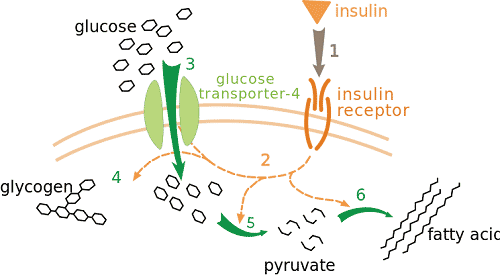What are Insulin and Glucagon?
Insulin and glucagon are two hormones secreted by the pancreas that regulate blood sugar levels. They work together to maintain glucose levels within the optimal range of 70 mg/dL to 110 mg/dL. When blood sugar levels are high, insulin is released to decrease the glucose in the blood. Conversely, when blood sugar levels are low, the pancreas secretes glucagon, which increases blood sugar levels.
When insulin levels rise, the liver absorbs excess glucose and converts it to glycogen for storage. This stored glycogen helps in managing low blood sugar levels caused by missed meals. When blood sugar levels drop, glucagon signals the liver to convert glycogen back to glucose, which then enters the bloodstream and is absorbed by the cells through insulin receptors.
Difference Between Glucagon and Insulin
While insulin deficiency leads to type 1 and type 2 diabetes, Insulin prompts cells to increase their intake of glucose and amino acids as it is an anabolic hormone.
Glucagon and Diabetes
Glucagonoma’s are very rare cause of diabetes, and results from a tumor that produces too much glucagon, unresponsive to physiological feedback inhibition. Furthermore if a glucagonoma is present there will likely be a skin rash called necrolytic migratory erythema in approximately 70 % of cases. See image below.

Source: Wikipedia
Disclaimer: The contents of this community article are strictly for informational purposes and should not be considered medical advice. This article, and other community articles, are not written or reviewed for medical validity by Canadian Insulin or its staff. All views and opinions expressed by the contributing authors are not endorsed by Canadian Insulin. Always consult a medical professional for medical advice, diagnosis, and treatment.



